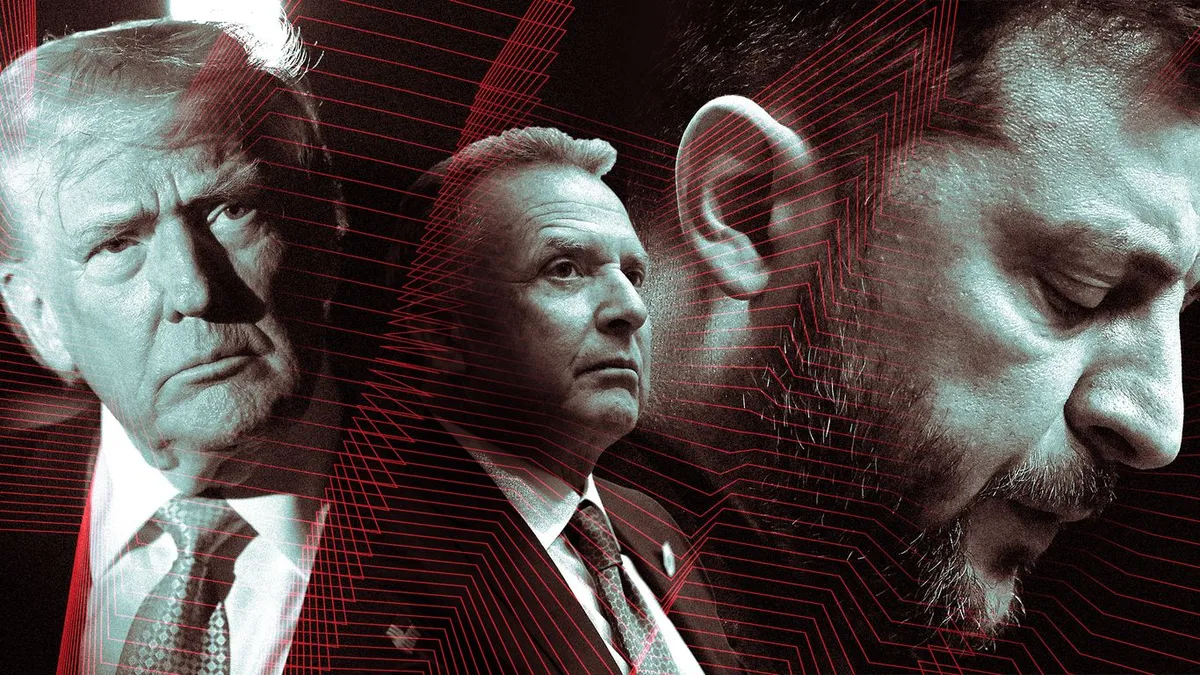
One week ago, President Volodymyr Zelensky listened intently on speakerphone as President Trump’s advisers, Steve Witkoff and Jared Kushner, detailed a 28-point plan aimed at bringing an end to the ongoing war in Ukraine. This meeting, which has not been widely reported until now, highlights the intense diplomatic efforts surrounding Ukraine's future amidst significant pressure from the U.S. administration.
Why is this 28-point peace plan important? Just two days after the plan was revealed by Axios, Zelensky warned the Ukrainian people that the pressure to sign the plan had thrust Ukraine into one of its most challenging periods. Zelensky's participation via phone in the meeting between his national security adviser, Rustem Umerov, and Trump’s team sheds light on the timeline of when he was introduced to these negotiations.
The initiative for the peace plan began about a month earlier during a flight from the Middle East back to Miami on October 22. On that flight, Kushner and Witkoff shifted the conversation from the Gaza deal to the war in Ukraine. On the same day, Trump imposed sanctions on Russia for the first time since resuming office, as the peace process remained stalled. The advisers aimed to replicate their Gaza strategy—drafting a plan, presenting it, and facilitating discussions between both parties.
Just three days later, Witkoff and Kushner had dinner in Miami with President Vladimir Putin's envoy, Kirill Dmitriev. In a subsequent interview, Dmitriev revealed that the discussions focused on documenting understandings from the Trump-Putin summit in Alaska, aiming to create a framework for achieving lasting security in Europe, extending beyond just Ukraine. The outcome of these meetings led to the initial draft of the 28-point U.S. peace plan.
With Trump’s endorsement, Witkoff and Kushner engaged in discussions with both Russian and Ukrainian officials. It was necessary for them to secure approval from Trump prior to reaching out to both parties, according to a U.S. official. Secretary of State Marco Rubio was kept informed throughout the process, along with Vice President Vance.
In a strategic move, Vance proposed that Army Secretary Dan Driscoll deliver the 28-point plan to Ukraine. Driscoll was already scheduled to visit Ukraine with a military delegation focused on defense technology and strategy. However, the White House expedited his travel plans to facilitate peace negotiations. The urgency was palpable as Driscoll prepared with policy briefs and historical context regarding the conflict.
Meanwhile, Witkoff and Kushner met with Umerov over two days at Witkoff’s residence in Miami. A senior Qatari official, who had established rapport with both U.S. envoys and the Ukrainian team, was also present. During these meetings, Umerov suggested that Zelensky should hear the plan directly from Trump's team. However, the attempt to convey the details over the phone proved challenging, as a Ukrainian official later expressed strong objections to the plan and its presentation.
Despite these concerns, the U.S. team left the meeting with optimism, believing that they had secured Ukrainian support for the plan. Witkoff was scheduled to travel to Turkey to present the plan directly to Zelensky, but that meeting ultimately did not occur due to perceived backtracking on the part of the Ukrainians.
On November 18, Axios reported on the 28 points, which outlined areas including peace in Ukraine, security guarantees, and future U.S. relations with Russia and Ukraine. The response from European officials and other stakeholders in Washington and Kyiv was largely one of confusion and dismay. Many were horrified by the proposal, which included concessions that would require Ukraine to cede additional territory to Russia.
When European diplomats sought clarification from the State Department, they were informed that the plan was not officially a Trump initiative. However, Trump publicly embraced the proposal, insisting that Ukraine sign it by Thanksgiving. Following Zelensky’s meeting with Driscoll, a U.S. official claimed that a timeline for signature had been established, and Zelensky understood that rejecting the plan was not a viable option.
Zelensky addressed the Ukrainian public, emphasizing the dire consequences of the situation: “We risk losing our dignity or losing the support of the U.S.,” he warned, acknowledging the urgent need for a response. However, some within the Trump administration, including Rubio, expressed concerns that negotiations were progressing too rapidly.
Trump's Thanksgiving deadline was partly driven by his frustration with Zelensky, leading to further complications in the negotiation process. As tensions escalated, Rubio and other officials traveled to Geneva to clarify the U.S. position. Rubio insisted that the plan should not be perceived as a Russian initiative but rather as a framework for negotiations. The meeting in Geneva was marked by tension, but both sides released positive statements afterward.
As discussions continue, both the U.S. and Ukrainian representatives have indicated a willingness to engage further. Although Trump expressed dissatisfaction with the Ukrainian response, Rubio stated that the aim remains to achieve a deal as soon as possible. If progress is made during talks, there may be potential for a meeting between Trump and Zelensky in the near future, but no date has been set yet.